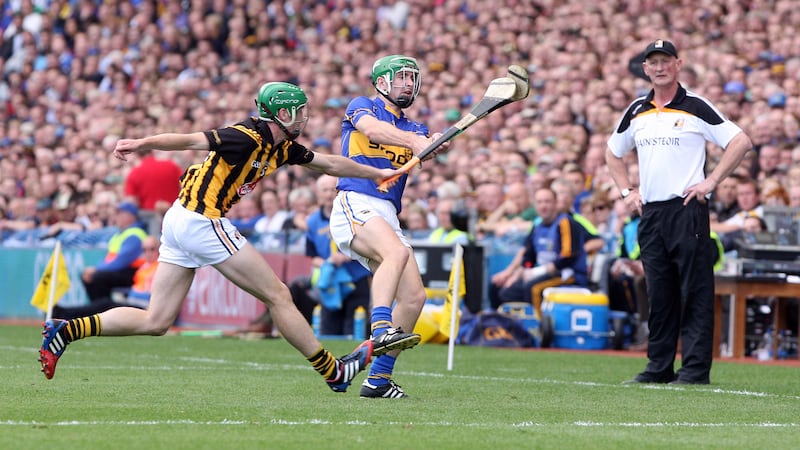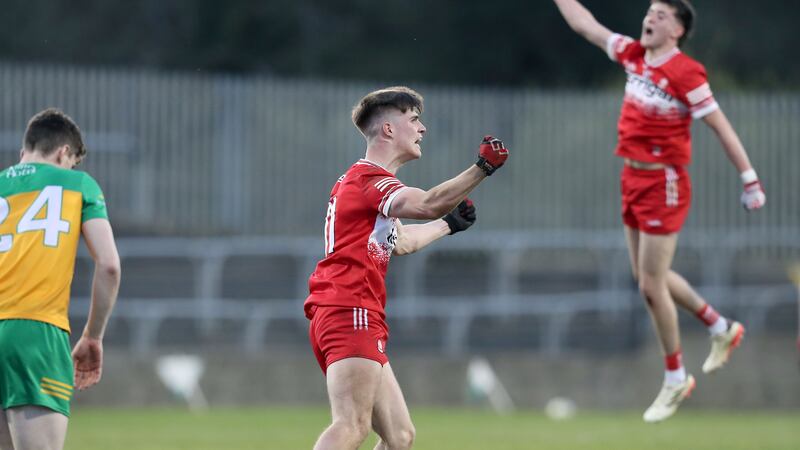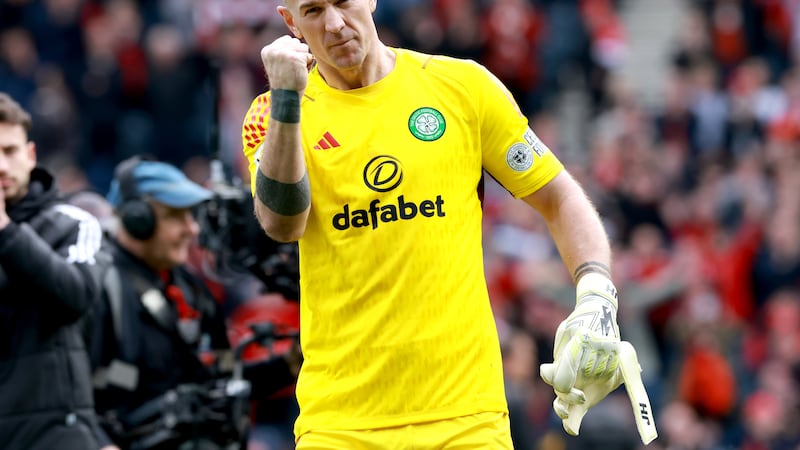GALWAY were playing with a strong breeze, they had momentum and their confidence was up. And the shots just kept coming. At half-time against Laois last Saturday, Galway already had 32 shots at the target. By the end, they had clocked 3-28. It was the beginning of the weekend’s deluge.
The following day, Tipperary hit Limerick for 4-23. Kilkenny whacked Wexford with 5-25. They were three huge statements from three big guns, who riddled their opponents with bullets. In the three matches, Kilkenny, Tipp and Galway accumulated a whopping 11-56 from play. Staggering shooting. Staggering scoring.
Hurling continues to evolve and change. Teams adapt different styles to make themselves harder to beat, and to try and compete at the top level. Throughout the spring, Waterford were repeatedly labelled a ‘defensive’ team. Then they hit 1-24 against Cork in the League final. When they took the Rebels down again three weeks ago, they hit 3-19. Bigger challenges will lie ahead for Waterford but they have already proved one key point – any team with big ambitions now (as Waterford have) has got to be able to hit a big score.
In the 2009 All-Ireland final epic between Kilkenny and Tipperary, Kilkenny’s tally of 2-22 – with both goals coming in the closing minutes – secured them a five-point win. In last year’s drawn All-Ireland final between the same teams, Kilkenny’s 3-22 wasn’t enough to win the match. Tipperary managed 1-28 and that didn’t suffice either.
In so many ways, that 2009 All-Ireland final was a ground-breaking match for where hurling was headed – and where it has since gone. In the history of All-Ireland finals, two teams had never hit more than 21 scores each. That 2009 final produced 47 scores, which equalled the highest number ever recorded in an All-Ireland final – set by Kilkenny the previous year in their destruction of Waterford.
Kilkenny had 10 scorers from play, which was the greatest spread of scorers on an All-Ireland winning team. At the time, that 2009 final was considered the greatest ever, one that might never be repeated. Yet compare that standard to the quality of last year’s final. The accuracy was off the charts. The tally of 54 scores was the most recorded in an All-Ireland final. There were 20 different scorers from play.
The standard of shooting continues to rise in the modern game. There was little intensity in Dublin’s play when they met Cork in March, but Cork still managed to hit a record breaking 0-34. When the sides met again in the League semi-final in April, it was another score-fest, with 53 scores recorded. Cork didn’t play well, but they still hit 1-27.
Like so much of the modern game, Kilkenny have played a key role in shaping it. During their quest for five in-a-row between 2006 and 2010, Kilkenny took point-scoring to a totally new level. In 2006, they became the first team in history to raise 20 white flags or more in four consecutive Championship games. Now? Every day a team plays, they expect to hit 20+ points.
A comparative stats case study shows just how much the game has changed in two decades. In 251 games in 11 seasons between 1994 and 2004 there were 64 occasions when a team hit 20 points on more. However, in just 35 games in the 2014 Championship, a team hit 20 points or more on 29 occasions.
The trend change has increased scoring spreads and redefined the primary scoring zone. Given that the nature of defending has changed, with more free space often being available out the field, it allows for more long-range point-scoring.
That overall increase in long-range striking and scoring has come about through a combination of factors; advanced weight training, better hurleys, lighter sliotars. And more confident players.
Another theory is that the ball has become so light now that it enables players to regularly fire the sliotar over the bar from 100 yards. There are also more scores now coming from dead-ball striking. Free-taking has never been better.
The stats continue to rise. When Laois and Offaly met in a Leinster quarter-final three weeks ago, the statistician Leo McGough showed how their combined total of 50 points (all white flags) was a record-equalling Championship white flag tally. That total matched the 50 points (white flags) Kilkenny and Tipp managed in the drawn All-Ireland final last September. In fact, the 50-point tally had only been broken last June for the first time when Kilkenny (mostly Kilkenny) and Offaly combined for a total of 50 points.
Prior to that match, the most white flags recorded in a Championship match had been the 1974 All-Ireland semi-final when Kilkenny and Galway hit a combined 49 points. Yet that game was played over 80 minutes. That day, Kilkenny racked up 2-32, which was an anomaly in scoring terms. Prior to 2008, only five teams had ever managed to hit 30 points (white flags) or more in a Championship game and only one of those games involved two top-nine teams.
Kilkenny had done so on three of those five occasions but they had never managed it against a top-nine team in a 70-minute game. Cork put 5-31 past Waterford in the 1982 Munster final before putting 2-32 past Kerry in the 2000 Championship. However, since Kilkenny nailed Waterford for 3-30 in the 2008 All-Ireland final, the 30+ points (white flags) barrier has been broken more regularly.
En route to their All-Ireland title two years ago, Clare put 1-32 past Laois. Last June, Kilkenny nailed Offaly with 5-32. Galway would have breached that 30-point (white flags) barrier last weekend if they had converted a couple more of their 15 wides.
There may be more games now and more opportunities to rack up big point tallies in Qualifier matches. Yet defending has never been better and defenders have never been faster or more mobile.
Players also have to execute the skills now at lightning pace and, overall, hurlers have never been more skilful. And never more accurate.








